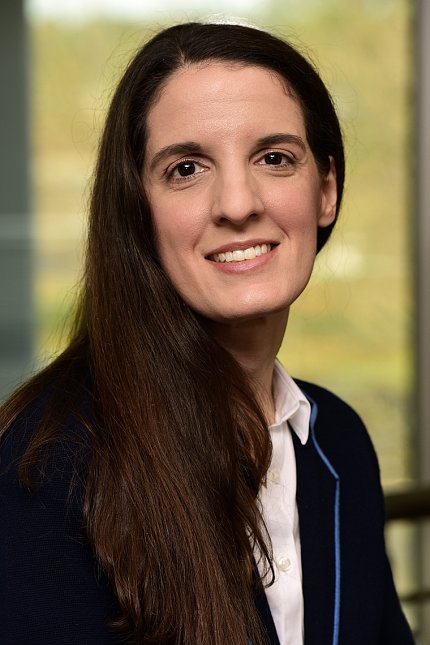New Partnership Forged
Implementing Interventions for Environmental Health Equity

Photo: Steve McCaw/NIEHS
Environmental health scientists forged a new partnership with implementation scientists to discuss how, together, they might address challenges and improve environmental health equity, during a 2-day workshop held earlier this year.
Implementation science studies methods to promote adoption of evidence-based practices, interventions and policies to improve population health. The field is part of NIEHS’s strategic plan—Promoting Translation: Data to Knowledge to Action—to encourage application of strategies to reduce or avoid environmental exposures and resulting health impacts.
Real-World Example
Dr. Lindsey Martin, a health scientist administrator in the NIEHS Population Health Branch (PHB), and Dr. Rick Woychik, director of NIEHS and the National Toxicology Program, offered a real-world example from the Clean Cooking Implementation Science Network that applied implementation science to promote uptake of clean cooking technology to reduce household air pollution (HAP).
Unsafe cooking practices lead to HAP around the world and disproportionately affect the health of women and children in low- and middle-income countries. Researchers are studying strategies to promote appropriate use of cleaner cookstoves to replace HAP-generating instruments. Understanding the related individual, community, societal and policy factors is essential to supporting sustainable adoption.
Challenges to Implementation
“Could implementation science be the missing piece in addressing environmental health disparities through environmental justice research?” asked Dr. Melissa Smarr, a PHB health scientist administrator.
To achieve equity, barriers must first be worked through and understood. For example, structural racism may make implementation more difficult due to long-established interventions that might not serve all people equally. Therefore, de-implementation can be just as important a consideration, according to Dr. Rachel Shelton of Columbia University.
“We can introduce new programs and policies, but we also need to be thinking about how we de-implement programs, policies and practices that are already in place and are harmful,” Shelton said. “This is a new and emerging area of implementation science.”
Power of Green

Photo: MARVIN MINDER/SHUTTERSTOCK
Living in green spaces, surrounded by trees and grass, improves cardiovascular health and reduces air pollution, according to NIEHS grantee Dr. Aruni Bhatnagar, who leads the Green Heart Study at the University of Louisville.
Expanding on the health effects of greening urban areas, Dr. Eugenia South, director of the Urban Health Lab at the Perelman School of Medicine at the University of Pennsylvania, explained that the hardest hit areas stand to gain the most from environmental interventions.
“Gun violence is not immediately an outcome that people associate with thinking about neighborhood environments and environmental health, but I really want to get people thinking about that outcome,” she said.
South’s research suggests that revitalizing urban vacant lots with greenery resulted in a 29 percent reduction in gun violence and lowered self-reported depression by 41 percent.
‘Never Too Early’
“A main takeaway is that it is never too early to think about implementation science,” Martin said. “From better understanding issues of feasibility to planning for sustainability, you could incorporate implementation science throughout the research pathway.”
The workshop featured panel discussions about four areas organizers say the fields of environmental health sciences and implementation science can grow together: environmental health disparities and environmental justice; prevention and interventions; climate change and disasters; community-engaged research.
“Equity is really the cornerstone and it needs to be front and center in how we think about science moving forward,” added PHB chief Dr. Claudia Thompson, in closing remarks.
Martin, NCI program director for implementation science Dr. Gila Neta and OBSSR health scientist administrator Dr. Dara Blachman-Demner cochaired the workshop, which was a joint effort by NIEHS, NHLBI’s Center for Translation Research and Implementation Science, NICHD, FIC, NCI, NIMH, NIMHD, Office of Behavioral and Social Sciences Research and Office of Disease Prevention.
